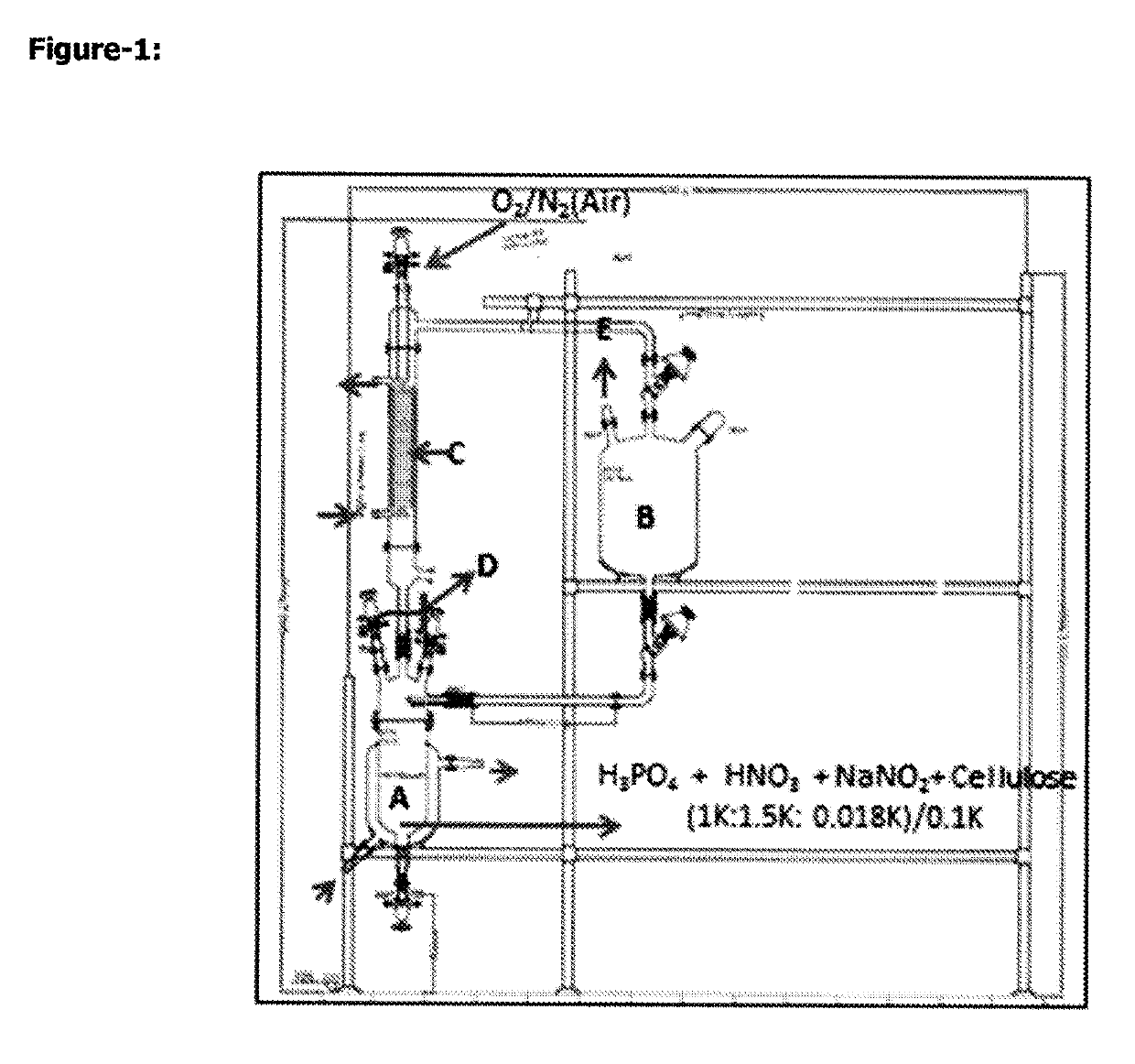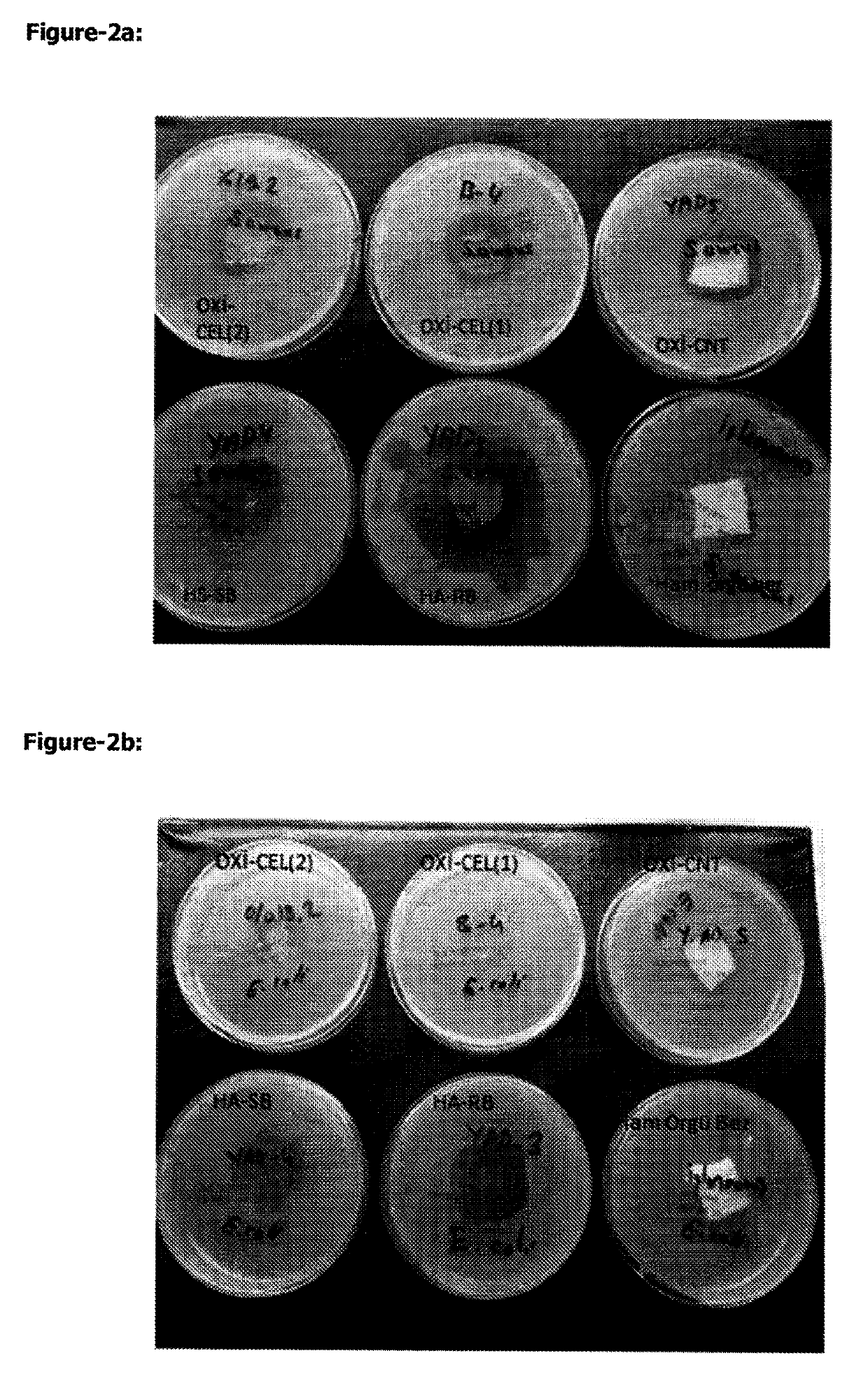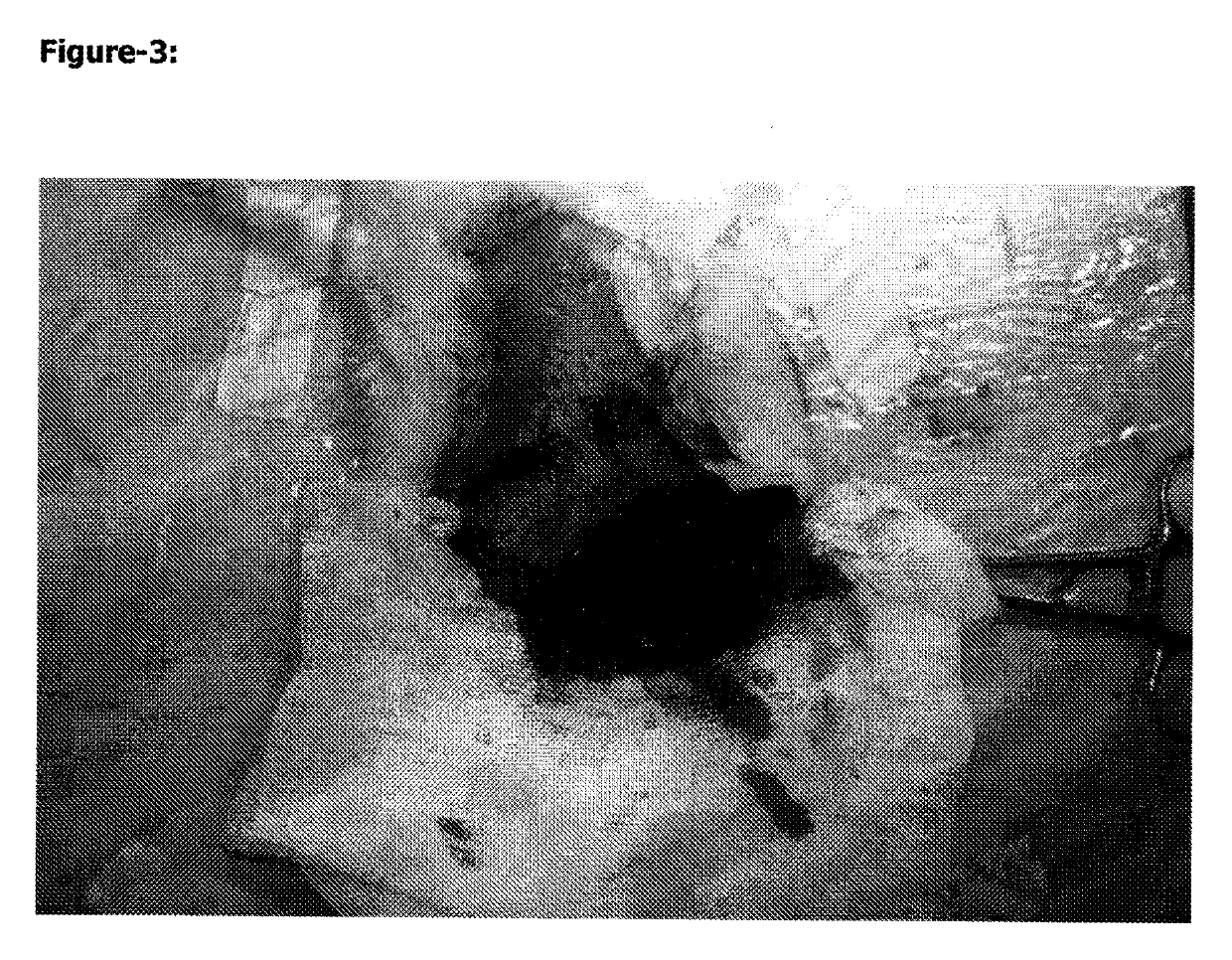Regenerated oxidized celulose based hemostatic materialcontaining antifibrolytic agents
a technology of oxidized celulose and hemostatic material, which is applied in the field of regenerated oxidized celulose based hemostatic material containing antifibrolytic agents, can solve the problems of low oxidisation productivity and insufficient industrial production, and achieve low oxidation productivity, prevent hydrolysis, and reduce the effect of oxidation
- Summary
- Abstract
- Description
- Claims
- Application Information
AI Technical Summary
Benefits of technology
Problems solved by technology
Method used
Image
Examples
example-1
ed Oxidise Cellulose Powder (Liquid Phase Oxidisation)
[0222]REOXC Pudr: REOXC-P (P=pudr)
[0223]Put the mixture of 50 ml H3PO4 85% and 75 ml HNO3 65%, 8 g viscon fiber or 5×5 cm 28DN woven viscon in the two necked flask. To keep temperature of reaction at 38-40° C., aerate from one neck of flask. Put cold demineralised water 6 times of flask volume and mix strongly. Filter with small pored gauze. Rinse with 200 ml water 3-5 times. Keep rinsing till pH of flushing water is 2.8-3.1. After then rinse with 98% ethanol and dry at room temperature. Then dry with P2O5 in vacuum oven at 50° C. for 2 h. Drying loss is 4-5%, —COOH yield is between 20.0-21.8%; aldehyde yield is 0.3-0.5%, bound nitrogen is 0.1-0.25%. If change the conditions of rinsing (30% H2O2 and 98% ethanol), —COOH yield is 21-22.2%, nitrogen is <0.05%, aldehyde yield is <0.1%.
example-2
ed Oxidise Cellulose Cotton and Textile (Gas Phase Oxidation) “REOXC”
[0224]Glass reactor at FIG. 1, Put 1000 ml 85% H3PO4 and 1500 ml 65% HNO3 on 5 l flask. Add 120 g of 150 g / m2 raw woven viscon to this mixture. 33 g NaNO2 is added slowly within 45 min. 400 g viscon cotton dried with P2O5, at 50-60° C. for 2 h (30DN woven, 30DN textile or 28 DN woven and 28 DN textile) is put 20 1 N2O4 gas obtained outlet of Flask A pass through to Flask B for 150-170 h. Flask A is heated at 45-50° C. for 1.5-2.5 h. Flask B is heated from gas outlet by 0.5 I / h air. Whenever colour of oxidation material on flask B is red-brown, it means N2O4 saturated. Cellulose material:gas rates must be (<2:0.6-2:1).
[0225]At the end of the reaction 2 no. tap on Flask B close and aerate from 3 no. tap and take off system. Gas is aspirated. Evolved gas is hold with wet CaO granule holder or by passing through to water. Put the oxidised textile or woven material on 10 l flask. Rinse with demineralised water (1:4) thr...
example-3
lcium and Sodium to Powder Oxidise Cellulose “PA-3”
[0229]a. 16.0 g REOXC pudr containing 21.1% —COOH is solved in solution of 3.6 g NaOH in 175 ml demineralised water. Put 3.51 g CaCl2.2H2O compound with 25 ml demineralised water in solution of first step. After adding 4 ml 30% H2O2, put mechanical stirrer for 60 min. pH is adjusted with acetic acid for 5.3-5.4. After adding 175 ml. 98% ethanol, suspension is mixed for 20 min. For separation centrifuge at 4000 rpm for 8-10 min. Rinse with 60% ethanol three times and centrifuge. Take the sediment and put petri dishes and freeze at −40° C. and lyophilise for 24 h.
[0230]
Product:—COOH21.15%Ca2.0-2.1%Na1.6-1.9%N 0.11%Aldehyde0.2-0.3%[0231]b. If it is preferred that Na rates is smaller than 1.8%, pH will be adjusted 4.3-4.5 and obtain that Na yield is 0.9-1.1% and so hemostatic features increasing. At the same time bioabsorbability is increasing and optimising in good conditions. See hemostatic studies “PA-3”
[0232]
Product:—COOH21.15%Ca2.0...
PUM
| Property | Measurement | Unit |
|---|---|---|
| weight % | aaaaa | aaaaa |
| absorption time | aaaaa | aaaaa |
| absorption time | aaaaa | aaaaa |
Abstract
Description
Claims
Application Information
 Login to View More
Login to View More - R&D
- Intellectual Property
- Life Sciences
- Materials
- Tech Scout
- Unparalleled Data Quality
- Higher Quality Content
- 60% Fewer Hallucinations
Browse by: Latest US Patents, China's latest patents, Technical Efficacy Thesaurus, Application Domain, Technology Topic, Popular Technical Reports.
© 2025 PatSnap. All rights reserved.Legal|Privacy policy|Modern Slavery Act Transparency Statement|Sitemap|About US| Contact US: help@patsnap.com



